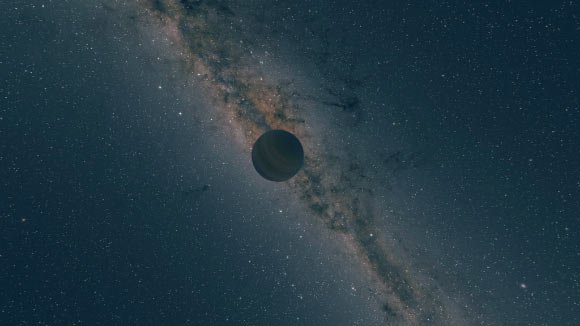Free-floating, or rogue, exoplanets — free-floating planetary-mass objects that do not orbit a star and instead travel through space — could be surprisingly common in our Milky Way Galaxy; and NASA’s upcoming Nancy Grace Roman Space Telescope (Roman) will detect at least 250 such free-floating planets with masses down to that of Mars, according to a new paper published in the Astronomical Journal.
Source: Sci News
Free-floating planets are isolated objects that have masses similar to that of planets. The origin of these objects is unknown.
They could form in the gaseous disks around young stars, similar to those planets still bound to their host stars. After formation, they could later be ejected through interactions with other planets in the system, or even fly-by events by other stars.
Or they could form when dust and gas swirl together, similar to the way stars form.
“The Universe could be teeming with rogue planets and we wouldn’t even know it,” said co-author Professor Scott Gaudi, a researcher in the Department of Astronomy at the Ohio State University.
“We would never find out without undertaking a thorough, space-based microlensing survey like Roman is going to do.”
“As our view of the Universe has expanded, we’ve realized that our Solar System may be unusual,” said lead author Samson Johnson, a graduate student at Ohio State University.
“Roman will help us learn more about how we fit in the cosmic scheme of things by studying rogue planets.”
“Identifying those planets will help scientists infer the total number of these rogue planets in our Galaxy.”
Roman, named for NASA’s first chief astronomer who was also known as the ‘mother’ of the NASA/ESA Hubble Space Telescope, will attempt to build the first census of free-floating planets.
“Roman is designed not only to locate free-floating planets in the Milky Way, but to test the theories and models that predict how these planets formed,” Johnson said.
The team’s study found that Roman is likely to be 10 times more sensitive to free-floating planets than existing efforts, which for now are based on telescopes tethered to the Earth’s surface.
It will focus on planets in the Milky Way, between our Sun and the center of our Galaxy, covering some 24,000 light-years.
“There have been several rogue planets discovered, but to actually get a complete picture, our best bet is something like Roman. This is a totally new frontier,” Johnson said.
Roman, which is scheduled to launch in the next five years, will search for free-floating planets using a technique called gravitational microlensing.
That technique relies on the gravity of stars and planets to bend and magnify the light coming from stars that pass behind them from the telescope’s viewpoint.
This microlensing effect is connected to Albert Einstein’s theory of general relativity and allows a telescope to find planets thousands of light-years away from Earth — much farther than other planet-detecting techniques.
But because microlensing works only when the gravity of a planet or star bends and magnifies the light from another star, the effect from any given planet or star is only visible for a short time once every few million years.
And because rogue planets are situated in space on their own, without a nearby star, the telescope must be highly sensitive in order to detect that magnification.
“The microlensing signal from a rogue planet only lasts between a few hours and a couple of days and then is gone forever,” said co-author Dr. Matthew Penny, a researcher in the Department of Physics and Astronomy at Louisiana State University.
“This makes them difficult to observe from Earth, even with multiple telescopes. Roman is a game-changer for rogue planet searches.”
The authors estimate that Roman will discover around 250 free-floating planets that are the mass of Mars or larger.
“These planets are not likely to support life. They would probably be extremely cold, because they have no star,” Johnson said.
“If we find a lot of low-mass rogue planets, we’ll know that as stars form planets, they’re probably ejecting a bunch of other stuff out into the Galaxy. This helps us get a handle on the formation pathway of planets in general.”
Source: Sci News

































Leave a Comment
You must be logged in to post a comment.